 2017 Toyota Yaris III (facelift 2017) Dimensions, Size & Specs
2017 Toyota Yaris III (facelift 2017) Dimensions, Size & SpecsMeasurements of the 2017 Toyota Yaris III, engineered for optimal performance and comfort
| Dimensions | |
|---|---|
| Length: | 3945 mm155.3 in12.9 ft |
| Width: | 1695 mm66.7 in5.6 ft |
| Height: | 1510 mm59.4 in5.0 ft |
| Trunk Capacity: | 286 liter10.1 cu ft |
| Trunk Capacity (Max): | 768 liter27.1 cu ft |
| Weight Specifications | |
| Curb Weight: | 980-1135 kg2161-2502 lbs |
| Maximal permitted Weight: | 1545-1565 kg3406-3450 lbs |
| Tire Specifications | |
| Rims Sizes: | 15-inch rims:
|
| Tire Sizes: |
|
The Toyota Yaris III facelift, introduced in 2017 and produced until 2018, is a practical and compact hatchback designed for urban agility and efficient driving. This third-generation Yaris facelift maintains a length of 3945 mm (155.1 inches), a width of 1695 mm (66.7 inches), and a height of 1510 mm (59.4 inches), making it a well-balanced vehicle for navigating city streets and tight parking spots. The curb weight of the Yaris varies between 980 kg (2161 lbs) and 1135 kg (2501 lbs), depending on the configuration, reflecting its lightweight yet robust build aimed at fuel efficiency and easy handling. Its maximum permissible weight ranges from 1545 to 1565 kg (3407 to 3451 lbs), supporting a decent payload suitable for everyday needs. Storage capability is a strong suit for the Yaris III facelift with a luggage capacity of 286 liters (10.1 cubic feet) in the standard rear seat configuration. For users needing greater cargo space, folding the rear seats expands the luggage volume significantly to 768 liters (27.1 cubic feet), which is impressive for a car in this segment. The Yaris rides on rims sized between 5J x 15 and 5.5J x 15, with available 17-inch rims (5.5J x 17) for sportier variants. Tire sizes include 175/65 R15, 185/60 R15, and 205/45 R17, offering a range of options for ride comfort and performance. This facelifted Yaris continues Toyota's tradition of blending versatility, compact footprints, and reliable performance in a hatchback package ideal for drivers seeking a city-friendly vehicle without compromising utility.
Discover the standout features that make the 2017 Toyota Yaris III a leader in its class
Have a question? Please check our knowledgebase first.
The Toyota Yaris III facelift (2017-2018) measures 3945 mm (155.3 inches) in length, 1695 mm (66.7 inches) in width, and 1510 mm (59.4 inches) in height. These compact dimensions help make the Yaris highly maneuverable in urban settings, offering balanced interior space and ease of parking in tight spaces, which is typical of subcompact hatchbacks.
The curb weight of the Toyota Yaris III facelift varies between 980 kg (2161 lbs) and 1135 kg (2501 lbs), depending on the specific trim and equipment. A lighter curb weight contributes positively to fuel efficiency, allowing the vehicle to consume less fuel while maintaining nimble handling and decent acceleration with smaller engine options. The relatively low weight ensures that the Yaris remains economical and agile for city driving.
The luggage capacity of the Toyota Yaris III facelift is 286 liters (about 10.1 cubic feet) with the rear seats in their upright position. When the rear seats are folded down, this space expands significantly to 768 liters (approximately 27.1 cubic feet). This flexibility enables the Yaris to carry everyday shopping loads comfortably or accommodate larger cargo when needed, enhancing its practicality as a compact hatchback.
The Toyota Yaris III facelift comes equipped with several rim options including 5J x 15, 5.5J x 15, and 17-inch rims. The corresponding tire sizes are 175/65 R15, 185/60 R15, and 205/45 R17. Larger wheels like the 17-inch rims with lower profile tires tend to offer sharper handling and sportier aesthetics but may result in a firmer ride. Smaller wheels with higher profile tires generally provide better cushioning and comfort on rough roads.
Yes, the 2017 Toyota Yaris III facelift fits comfortably inside a standard residential garage. Typical garages have a width around 2.4 to 3 meters (7.9 to 9.8 feet) and a length of about 5.4 to 6 meters (17.7 to 19.7 feet). With the Yaris's compact width of 1695 mm (66.7 inches) and length of 3945 mm (155.3 inches), it provides ample clearance for easy parking while allowing additional space for opening doors or storing other items around the vehicle.
Compared to the previous Yaris II generation, the facelifted Yaris III offers improved interior packaging, despite similar external dimensions. The facelift included subtle design changes and better usage of interior space, like improved legroom and headroom due to optimized seat positioning and roofline adjustments. This results in enhanced passenger comfort and a more practical cabin layout, making the 2017 facelift slightly more accommodating for daily use.
The Toyota Yaris III facelift sits competitively among subcompact hatchbacks such as the Ford Fiesta and Volkswagen Polo. Dimensionally, the Yaris is similar or slightly more compact, with a length of 3945 mm (155.3 inches) compared to the Fiesta (~4035 mm/158.9 inches) and Polo (~4053 mm/159.6 inches). While these rivals may offer slightly more interior space or cargo volume, the Yaris is known for its reliable build quality, efficient fuel consumption, and user-friendly features, making it a strong contender in this segment.
The maximum permissible weight of the Toyota Yaris III facelift ranges from approximately 1545 kg (3407 lbs) to 1565 kg (3450 lbs), depending on trim specifics. This maximum weight includes the curb weight plus passengers, cargo, and any additional equipment. Knowing this limit is important to avoid overloading, which can negatively affect driving safety, braking performance, and suspension durability. The Yaris is designed to carry typical passenger loads comfortably while maintaining good handling.
The Toyota Yaris III facelift stands at 1510 mm (59.4 inches) tall. This modest height helps provide adequate headroom inside the cabin for most occupants while maintaining a low center of gravity for better vehicle stability and handling. Moreover, a relatively low height contributes favorably to aerodynamics, reducing drag and enhancing fuel efficiency. The balance also ensures the Yaris remains easy to access and provides sufficient interior comfort without compromising external styling.
The compact dimensions of the 2017 Toyota Yaris III facelift — 3945 mm (155.3 inches) long and 1695 mm (66.7 inches) wide — directly enhance its maneuverability in crowded city environments. Its relatively short length and narrow width make tight U-turns, narrow street navigation, and parallel parking easier compared to larger vehicles. The Yaris's small footprint also helps drivers find parking spots more readily. The combination of light curb weight and responsive steering ensures it is nimble and well-suited for everyday urban driving.
Discover similar sized cars.
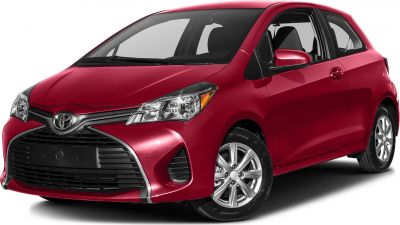
| Production: | 2014-2017 |
|---|---|
| Model Year: | 2014 |
| Length: | 3950 mm155.5 in |
| Width: | 1695 mm66.7 in |
| Height: | 1510 mm59.4 in |

| Production: | 2013-2017 |
|---|---|
| Model Year: | 2013 |
| Length: | 3969 mm156.3 in |
| Width: | 1973 mm77.7 in |
| Height: | 1495 mm58.9 in |
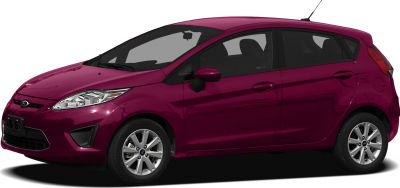
| Production: | 2008-2012 |
|---|---|
| Model Year: | 2009 |
| Length: | 3950 mm155.5 in |
| Width: | 1973 mm77.7 in |
| Height: | 1481 mm58.3 in |
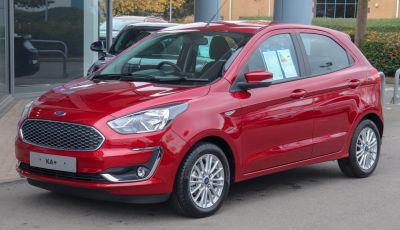
| Production: | 2018-2021 |
|---|---|
| Model Year: | 2018 |
| Length: | 3941 mm155.2 in |
| Width: | 1704 mm67.1 in |
| Height: | 1524 mm60.0 in |
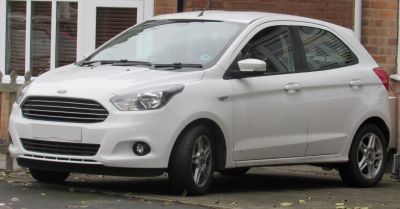
| Production: | 2016-2018 |
|---|---|
| Model Year: | 2016 |
| Length: | 3929 mm154.7 in |
| Width: | 1695 mm66.7 in |
| Height: | 1524 mm60.0 in |
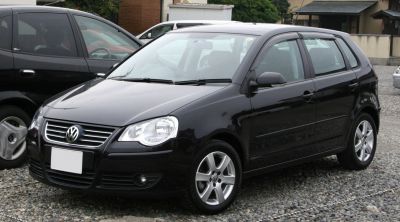
| Production: | 2005-2009 |
|---|---|
| Model Year: | 2005 |
| Length: | 3897-3916 mm153.4-154.2 in |
| Width: | 1931 mm76.0 in |
| Height: | 1467 mm57.8 in |
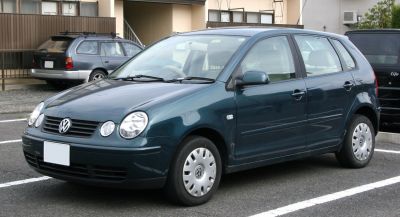
| Production: | 2001-2005 |
|---|---|
| Model Year: | 2001 |
| Length: | 3743-3897 mm147.4-153.4 in |
| Width: | 1632-1650 mm64.3-65.0 in |
| Height: | 1418-1465 mm55.8-57.7 in |

| Production: | 2013-2016 |
|---|---|
| Model Year: | 2013 |
| Length: | 3895 mm153.3 in |
| Width: | 1893 mm74.5 in |
| Height: | 1464 mm57.6 in |
